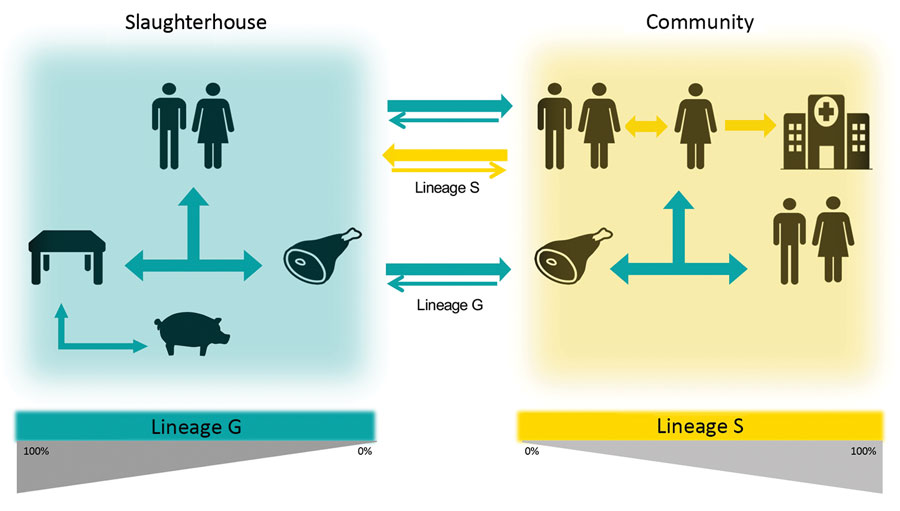Volume 27, Number 3—March 2021
Research
Foodborne Origin and Local and Global Spread of Staphylococcus saprophyticus Causing Human Urinary Tract Infections
Figure 6

Figure 6. A proposed model for the dissemination and transmission of Staphylococcus saprophyticus in the community. The arrows represent the dissemination and transmission of S. saprophyticus isolates that belonged to lineage G (green) and lineage S (yellow). Lineage G S. saprophyticus strains are of animal origin and enter the slaughterhouse through production animals, such as pigs, persist on the equipment, and contaminate the meat in processing chain. Lineage G strains could enter the community through contaminated meat and workers colonized in the slaughterhouse. Lineage S strains most likely are of humans and primate origin and probably are disseminated by person-to-person contact within the community.
Page created: December 29, 2020
Page updated: February 21, 2021
Page reviewed: February 21, 2021
The conclusions, findings, and opinions expressed by authors contributing to this journal do not necessarily reflect the official position of the U.S. Department of Health and Human Services, the Public Health Service, the Centers for Disease Control and Prevention, or the authors' affiliated institutions. Use of trade names is for identification only and does not imply endorsement by any of the groups named above.